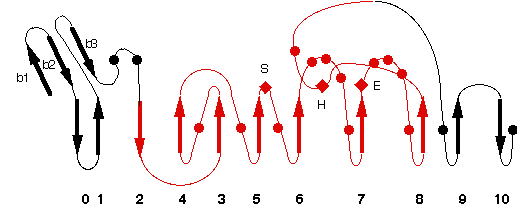5A2G
Name : An esterase from anaerobic Clostridium hathewayi Clath_Est1 can hydrolyze aliphatic aromatic polyesters
Revelation date : 24-Feb-2016
Family : Carb_B_Bacteria
Gene_locus : 9clot-r5t6k9
PDB file : ESTHER: header of PDB entry RCSB: Full entry
Comment
Hromic, A., Pavkov Keller, T., Steinkellner, G., Gruber, K., Perz, V., Baumschlager, A., Bleymaier, K., Zitzenbacher, S., Zankel, A., Mayrhofer, C., Sinkel, C., Kueper, U., Schlegel, K.A., Ribitsch, D., Guebitz, G.M.
Ligand :
References (1)
| Title : An Esterase from Anaerobic Clostridium hathewayi Can Hydrolyze Aliphatic-Aromatic Polyesters - Perz_2016_Environ.Sci.Technol_50_2899 |
| Author(s) : Perz V , Hromic A , Baumschlager A , Steinkellner G , Pavkov-Keller T , Gruber K , Bleymaier K , Zitzenbacher S , Zankel A , Mayrhofer C , Sinkel C , Kueper U , Schlegel K , Ribitsch D , Guebitz GM |
| Ref : Environ Sci Technol , 50 :2899 , 2016 |
| Abstract : Perz_2016_Environ.Sci.Technol_50_2899 |
| ESTHER : Perz_2016_Environ.Sci.Technol_50_2899 |
| PubMedSearch : Perz_2016_Environ.Sci.Technol_50_2899 |
| PubMedID: 26878094 |
| Gene_locus related to this paper: 9clot-r5t6k9 |
Representative scheme of Prolylcarboxypeptidase structure and an image from PDBsum server

